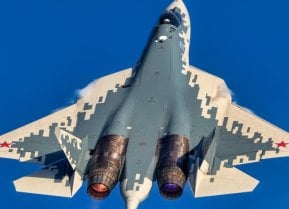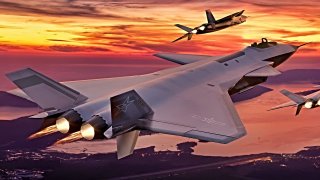Russia and China are Racing to Build the World's Best Stealth Fighter Engine
A stealth fighter is only as good as the engine powering it.
Despite a popular focus on stealth – and to a lesser extent, data fusion – in today’s fighters, America’s turbofan advantage is just as valuable in setting American fighters apart through a combination of high power output and carefully crafted radar and infrared detection mitigation.
A stealth fighter is only as good as the engine powering it, and until now, only the United States has been able to effectively field these sorts of advanced engines in sufficient numbers to equip a high-end fighter fleet.
But in April 2023, the Aero Engine Corporation of China (AECC) announced that serial production of China’s advanced WS-15 turbofan engine was finally set to begin, marking what is expected to be a significant leap in capability for the nation’s single in-service stealth fighter, the Chengdu J-20. The engine is expected to increase the power output pilots have on tap, the aircraft’s overall combat radius, and most importantly, stealth against both radar and infrared detection.
And even amid its stalled invasion of Ukraine and stagnating economic sanctions, Russia managed to follow suit in December – announcing that its homegrown 5th generation engine, known as the Saturn AL-51 in most international circles, would also see serial production in 2024. Just as with China’s WS-15, the inclusion of these new engines will give Russia’s Su-57 a palpable boost in combat performance and stealth – something the Russian 5th-generation jet struggles with more than any other jet of its class.
While the precise capability limits of these new Russian and Chinese turbofan engines are subject to some debate, the broad consensus is clear: the strategic advantage America’s advanced turbofan technology has long provided is rapidly eroding. But this won’t likely last.
THE F-22’S GROUNDBREAKING ENGINE
Development on Pratt & Whitney’s F119 turbofan engine, which would come to be the engine of the world’s first 5th generation fighter, began in 1983, with prototyping contracts awarded to both General Electric and Pratt & Whitney.
General Electric had been the clear frontrunner in fielding engines for stealth aircraft, having already successfully modified their F404 turbofan engines, originally developed for the F/A-18 Hornet, for stealthier duties in the F-117 Nighthawk. The company had also developed the B-2 Spirit’s F118 turbofans which were non-afterburning and much stealthier derivatives of its F110 engine that has seen service in several fighters over the years, including the F-16, F-15E, and new F-15EX.
GE’s incredibly forward-leaning YF120 engine design was the higher performer, thanks in large part to its groundbreaking variable cycle design that used bypass tubes to allow the engine to function like a low bypass turbofan during most flight regimes, but transition to nearly complete turbojet functionality at high altitudes where it would be more efficient.
But this high-technology approach came with a similarly high weight penalty and far more complexity than Pratt & Whitney’s more grounded, though still groundbreaking, proposal.
Pratt & Whitney’s YF119 may have been a bit more pragmatic, but it came with no shortage of technological advances. The YF119 leaned on previous developments derived from the U.S. Army’s Advanced Turbine Engine Gas Generator (ATEGG) program to inform turbine fan-blade shaping for optimal efficiency, and the Joint Technology Demonstration Engine (JTDE) program, to reduce the number of stages required for the same power output. Thus, Pratt & Whitney’s revolutionary new engine design made it possible to reduce the number of compressor stages from 10 in engines like the F100, to just six, allowing for a 22 percent increase in thrust output in an engine design with 40 percent fewer parts.
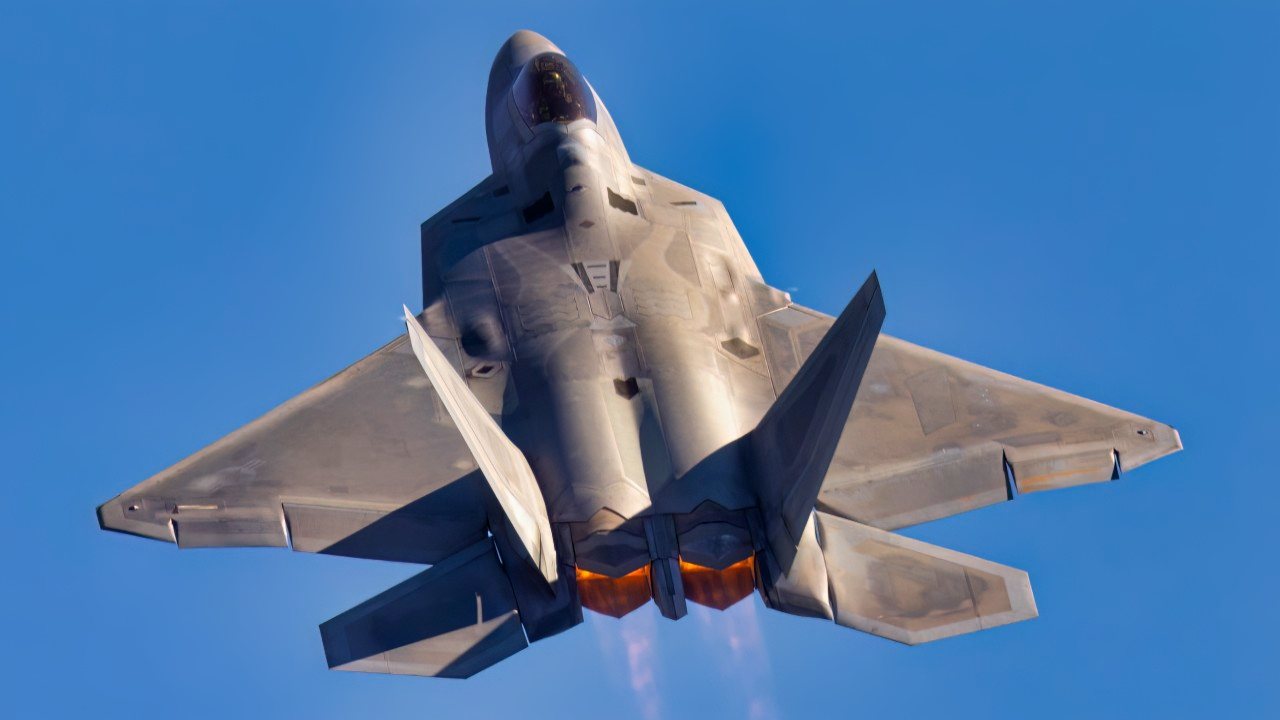
Their YF119 design’s multivariable, linear quadratic regulator control system allowed for extremely precise engine control across all flight conditions, maximized efficiency and performance in nearly all circumstances, and – while not often seen as sexy enough to celebrate – came with a proactive management toolset and new reliability tracking systems like an in-line oil-debris monitoring sensor to assess engine wear in real time to further streamline and reduce maintenance and repair requirements.
Its three-zone afterburner placed its fuel injectors in thick, curved vanes meant to block line of sight to the turbine; those vanes were coated in early ceramic-based radar-absobent material to further reduce radar detection. The engine nozzles, which offer ±20° thrust vectoring for incredible aerobatic performance, greater control at high altitudes, and more effective flying at higher angles of attack, used wedge-shaped flaps to reduce their radar return, while also facilitating the active mixing of outgoing engine exhaust with ambient air to reduce heat (or infrared) detectability as well.
THE MOST POWERFUL FIGHTER ENGINES ON THE PLANET
When the YF-22 and its pair of YF119 engines matured into the F-22 and the F119s, they represented the most advanced airframe/engine combination of any fighter in history, with unprecedented thrust-vectoring maneuverability and what Pratt & Whitney claimed was twice the thrust of current state turbofans while in supersonic flight.
With greater power output under afterburner than the J58s that powered the SR-71 Blackbird, these new F119 engines could pump out more thrust under standard military power – some 26,000 pounds each – than the F-15C’s engines could with their afterburners engaged. In fact, the F-22 has enough power to not just maintain supersonic speed under military power, but to accelerate beyond Mach 1 without using its afterburner at all. It can even maintain speeds as high as a reported Mach 1.8 while “supercruising” (or flying without afterburner).
Put simply, the F119 was every bit the performer the F-22 came to be, offering the United States a decisive airpower advantage.
In 2009, the F119 became the basis for America’s next serial production 5th generation engine entry, the Pratt & Whitney F135. This engine powers all three variants of the F-35 Lightning II, with Rolls Royce added into the mix to supplement the F-35B’s vertical-lift system. The new F135 turbofan engine offers even greater power output than the F119, with an astonishing 28,000 pounds of thrust under military power and 43,000 under afterburner. This provides the brute force necessary to give the single-engine Joint Strike Fighter a respectable thrust-to-weight ratio of about 1.07 with a standard combat load.
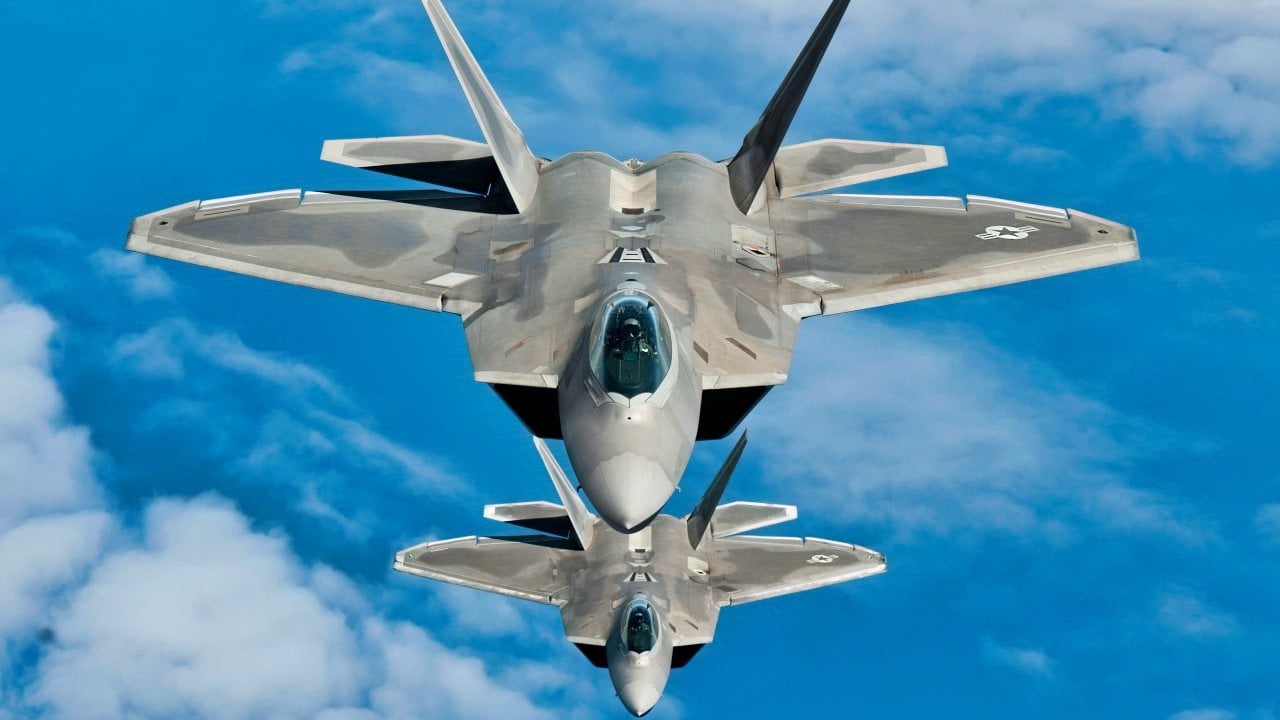
Despite suffering similar technical setbacks to the Joint Strike Fighter effort as a whole, the engine has emerged as not only the most technologically advanced turbofan in service today, but among the most reliable reaching a 95 percent fleet-wide engine readiness rate in 2019, and seeing more than a 50 percent reduction in production costs over the first 500 engines produced. In 2024, the F135 will receive a significant upgrade meant to provide greater cooling to allow for more electrical energy production; this will support a bevy of new systems and weapons that will come with the F-35’s Block 4 Upgrade.
But as capable as these Pratt & Whitney engines truly are, they are no longer without peers.
RUSSIA’S AL-51
Russia’s premier stealth fighter, known today as the Sukhoi Su-57 Felon, has had a troubled developmental and production cycle that has resulted in a platform widely recognized as the worst of its generation. Yet, truth is that direct comparisons to incredibly capable aircraft like the F-22 has, to some extent, skewed perceptions of what is otherwise a significant leap forward in Russian aviation technology.
Although the Su-57’s footprint is estimated to be thousands of times larger than the F-22 on radar screens, it is estimated to be anywhere from 16-30 times smaller on radar than its predecessor, the Su-27 marking a significant design improvement even if falling well short of its foreign peers. Nonetheless, stealth is just one of many areas the Su-57 program has struggled. While production volume is easily this aircraft’s primary shortcoming (with fewer than 20 Su-57s in service to date), Russia’s longstanding 5th-generation engine woes may come at a close second.
The handful of Su-57s Russia has in service today are powered by an updated iteration of the same thrust-vectoring Al-41F1 engine that also powers the country’s 4th generation Su-35S. This turbofan has been flying since the 1980s, though it saw the inclusion of an updated engine control system before being fitted into the Felon.
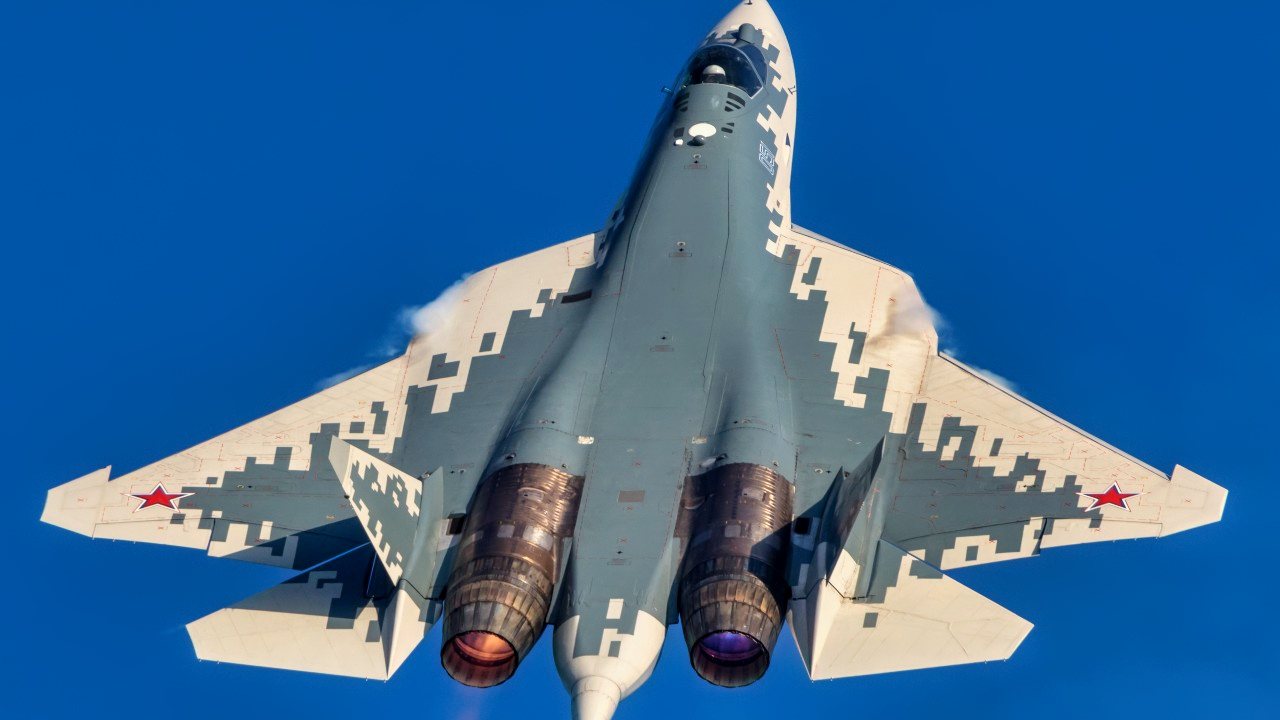
Though dated, these engines produce a respectable amount of power under afterburner: Each turbofan housed in the Su-57’s fuselage is capable of pumping out some 32,000 pounds of thrust – nearly on par with the F119s powering the F-22. However, the Russian engine can’t keep up nearly as well until military power, boasting just 19,900 pounds of thrust without the afterburner, as compared to the F119’s whopping 26,000 pounds.
As a result, Russia claims the Su-57 can supercruise, though its performance would fall short of earning that title by American standards. The U.S. Air Force considers “supercruising” to be flying without an afterburner at speeds of Mach 1.5 or faster, as several American 4th generation fighters can maintain lower supersonic speeds for a time without it. Russia, however, considers any supersonic flight without afterburner to be “supercruising,” and as such, claims the title despite the Su-57 likely only being able to reach Mach 1.3 or so in dry flight.
